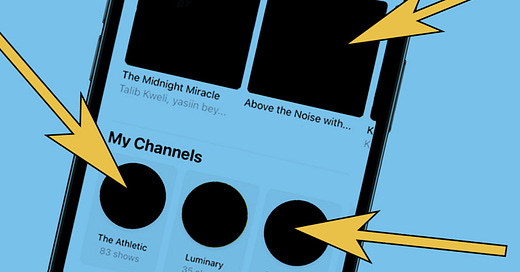Are you using EVERY Apple Podcasts artwork opportunity?
Part 2 of 2 in an Apple Podcasts artwork special
Well hello!
Last week I detailed all the different places Apple podcasts displays your podcast artwork and promotional materials.
This week let’s talk about how to optimise your design materials to look their best in every position - including the one piece of podcast art almost nobody seems to get right.
In part, this is inspired by the work we’ve been d…
Keep reading with a 7-day free trial
Subscribe to Podcast Strategy Weekly to keep reading this post and get 7 days of free access to the full post archives.




